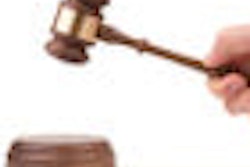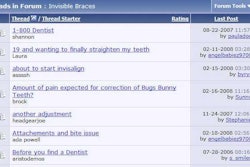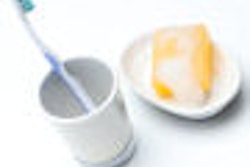Periodontist Tom Wilcko and orthodontist William Wilcko's "accelerated orthodontics" technique has become well-known for its ability to significantly speed up the teeth-straightening process and give patients a healthy bite in months rather than years. Now researchers at the University of Southern California (USC) say they have further improved the outcome of periodontally accelerated osteogenic orthodontics (PAOO) by using a different grafting material: human bone.
With PAOO, a periodontist or oral surgeon uses special instruments to score the bone that holds the teeth in place, then applies bone graft material over the grooves, the USC researchers explained in a press release. The bone softens as it heals, making it easier for the braces to align the teeth and dramatically reducing treatment time.
Traditionally, bovine bone or autoactive glass has been the PAOO grafting materials of choice. But the USC team, led by Hessam Nowzari, D.D.S., Ph.D., director of the USC School of Dentistry's Advanced Education in Periodontology program, opted to use patient bone for grafting.
"Given a choice for grafts, nothing is better than a patient's own tissue," Dr. Nowzari stated in a press release. "It encourages new, healthy bone formation in the grafted area. It's very safe and eliminates the risk of any disease transmission."
The USC case study, published in the Compendium of Continuing Education in Dentistry (May 2008, Vol. 29, pp. 2-9), looks at a 41-year-old man with class II, division 2 crowded occlusions who wanted his orthodontic treatment to be completed in less time than the usual two years.
The PAOO technique is particularly useful for adults since their dentoalveolar development has stopped.
"The average orthodontic treatment time for adults is considerably longer than for adolescent patients, ranging from 18.7 to 31 months," noted the study authors. "It is also more likely for adult patients to experience root resorption."
But when the patient was treated with the USC PAOO procedure, the total treatment time was only eight months. At the end of treatment, ideal class I occlusion was obtained, and the researchers did not note any detrimental periodontal effects or root resorption.
The autogenous bone graft was harvested from the rami and mandibular exostoses.
"The advantages of autogenous bone grafts include potential osteogenesis from surviving bone cells, osteoinductivity from cytokines and growth factors, and osteoconductivity from the autogenous bone," the authors noted.
Although bovine bone or bioactive glass offers the advantage of easy availability and no need for a second surgery, they are not comparable with autogenous bone graft, which facilitates bone integration, they added.
"PAOO is an effective treatment approach in adults to decrease treatment time and reduce the risk of root resorption," the authors concluded. "More clinical research is needed to determine the optimal amount of autogenous bone graft."



















